The next Site that I visited in a completed way, according to my plans, was South Korea’s only Natural Site, Jeju Volcanic Island and Lava Tubes, or simply just Jeju. The island is located eighty kilometers off the southwestern tip of the Korean peninsula, and consists entirely of a large, technically active, but recently dormant, shield volcano, with its last activity more than five thousand years ago. That location places it somewhat distant from the primary course of the Pacific Ring of Fire, and because of that, and with its classification as a shield volcano, its status as a former area of volcanic activity might not be readily apparent. Shield volcanos are formed when low-silica lava erupts onto the surface, which gives them several distinguishing characteristics, notably their gently-sloping sides leading to a relatively low central peak. I easily noticed some of these features that were in common with other examples that I have seen on previous tours, such as Medicine Lake Volcano in northeastern California, Newberry Crater in central Oregon, Sierra Negra in the Islas Galapagos, and also São Tomé, experienced earlier in the World2 Tour.
The island is home to a substantial resident population, possessing semi-autonomous status within South Korea, and is also one of the country’s most popular tourist destinations, largely thanks to its noticeably warmer climate. Because of these facts, there are numerous ferry options available to reach Jeju. On the outbound segment I took advantage of the fastest choice, a ninety minute journey from the coastal town of Wando. While for the return trip I took a slower vessel, which had the advantage of arriving at the port of Yeosu, a considerable distance further east, which saved me a day or two of cycling. That savings had now become important, given my recent mechanical delay.
There are three components of the World Heritage Site on Jeju, and I was satisfied with seeing two of those. The first I visited was the Seongsan Ilchulbong cinder cone, located at the eastern tip of the island. It was reached by a forty-kilometer route from where I was staying, which was surprisingly nice, with much of the way on quiet roads running right along the shoreline, a distinctly uncommon situation for Korea. The cone itself is located on a small spit of land in the Korea Strait, and after a steep trail with stairs to its rim, at one hundred-ninety meters above the sea, impressive views are had of its greenery-filled crater and the nearby coastline of Jeju. This location is very popular with Koreans, however, most of them did not pay the small fee that would allow them access to the rim. That may have been understandable, since the sights were beautiful, but not necessarily extraordinary.
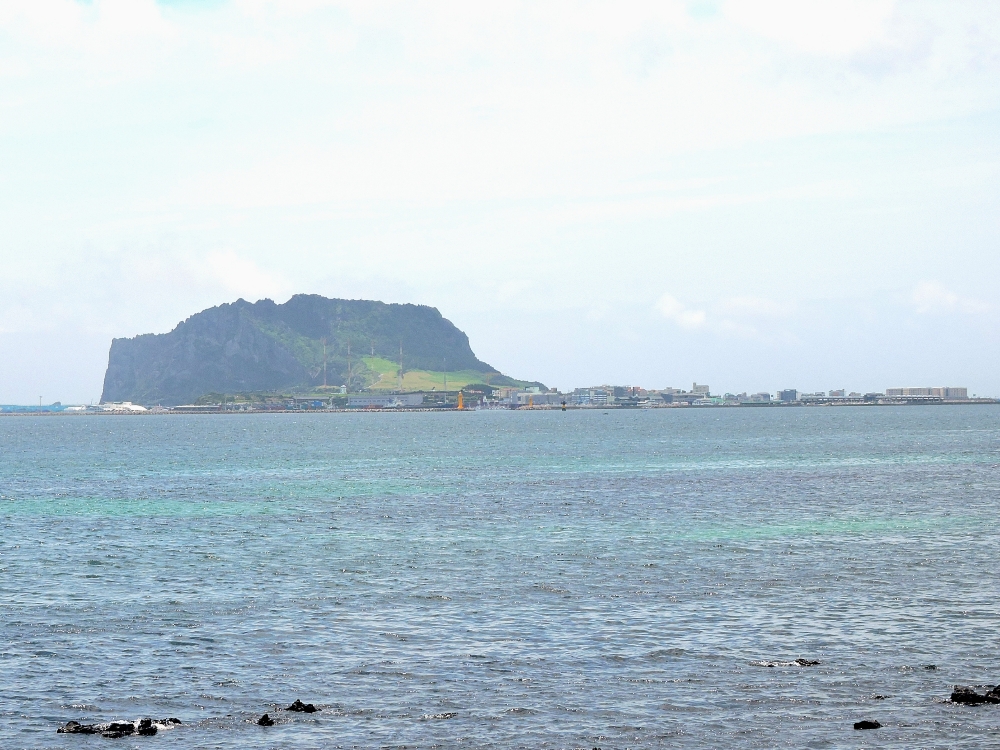
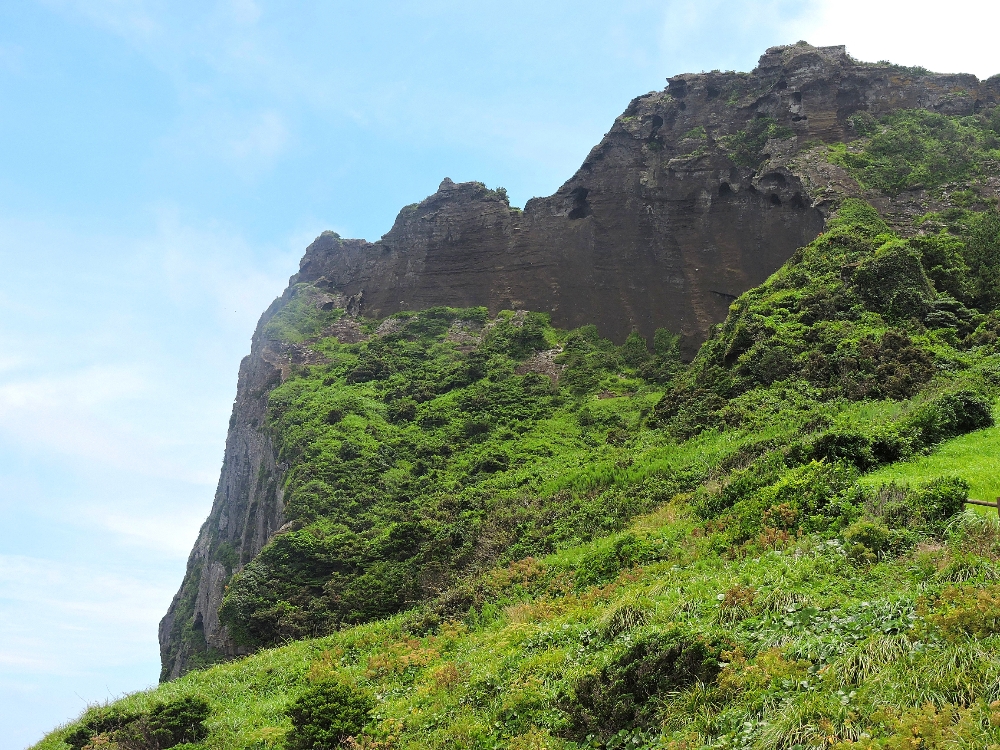
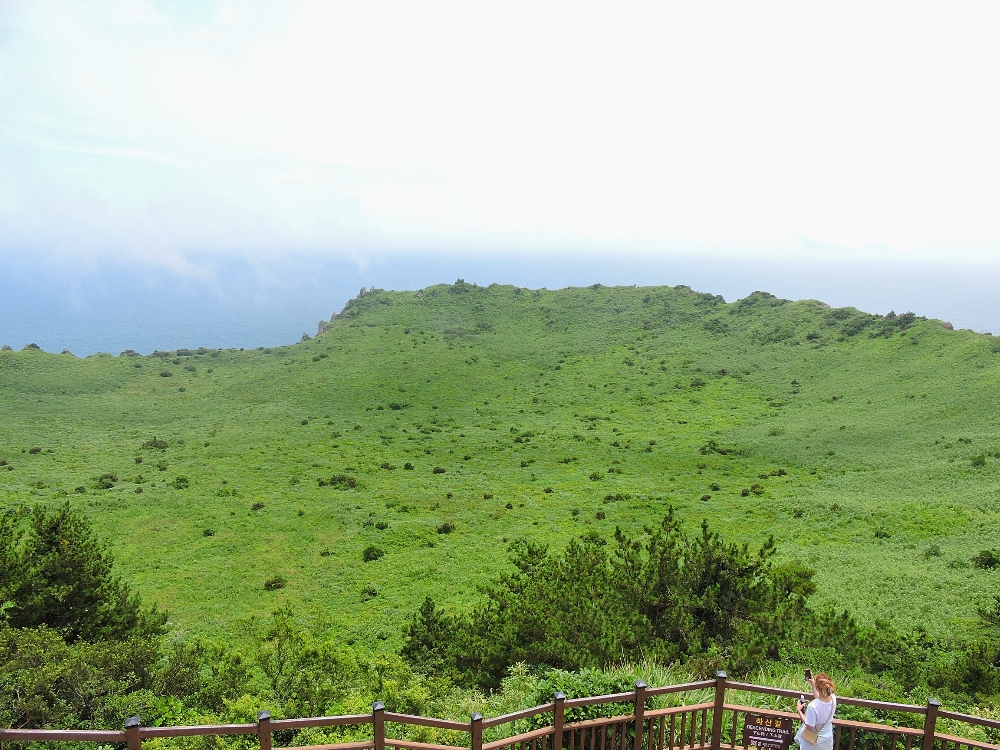
The best component of the Jeju Site is certainly the Manjanggul Lava Cave, which I saw on the return ride the same day. This two hundred thousand-year-old Lava Tube, together with several others, run in a line from the main volcanic cone, at the center of the island, for around twenty kilometers to the north shore of the island. Lava tubes are also characteristic features of shield volcanos, and I have explored some previously, notably in California and the Galapagos. In those cases I was alone in the caves, which increased the level of spookiness, however, on Jeju, the one-kilometer-long section that is open to visitors is also quite popular, so there were many others present with me. It was not really overcrowded, however, so it was still possible to appreciate the interesting features of the cave, starting with the fact that, unsurprisingly, it was almost twenty degrees centigrade cooler inside. More relevant aspects were many fine examples of flow marks, lava drips, and, at the end of the open section, what is said to be the World’s tallest lava colum, where lava once poured in through a hole in the ceiling almost eight meters above the floor.
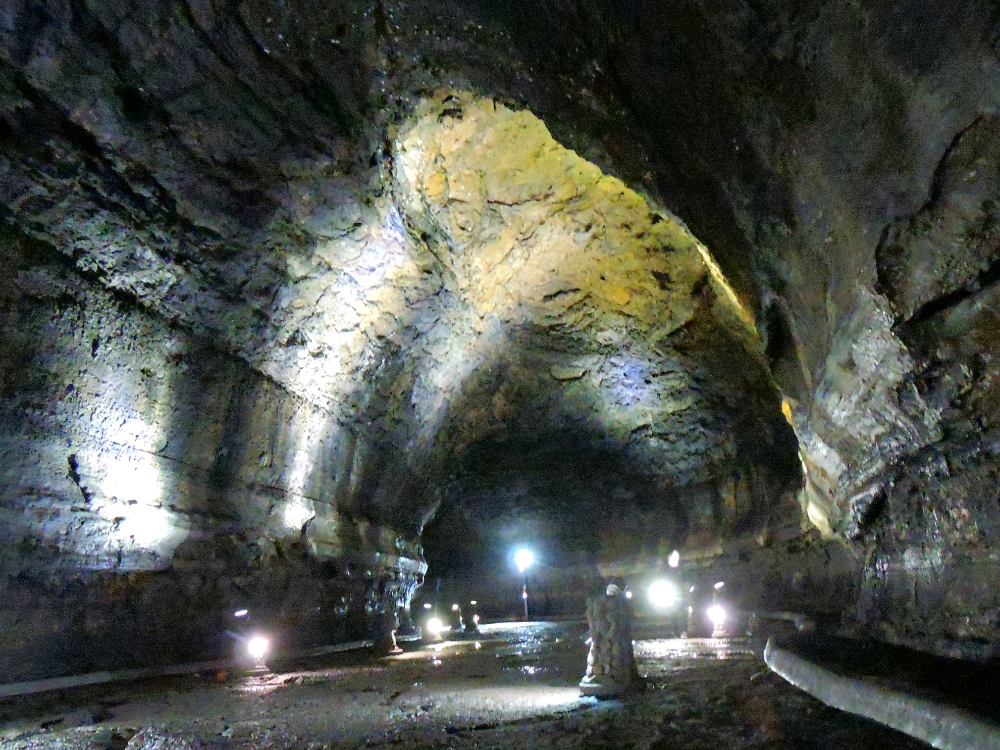
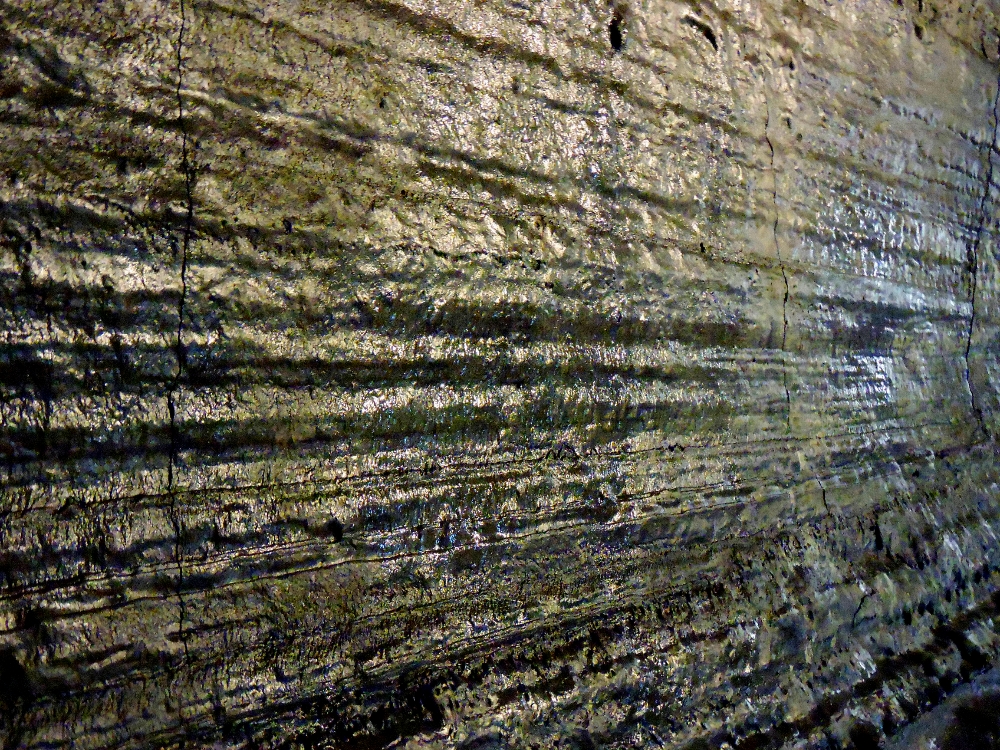
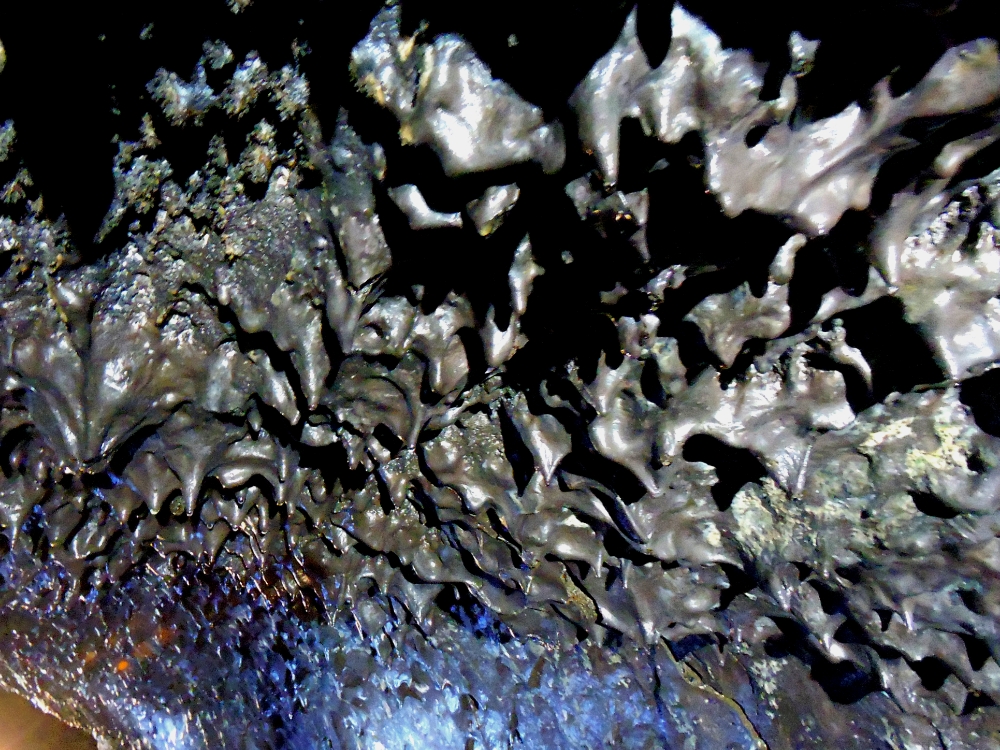
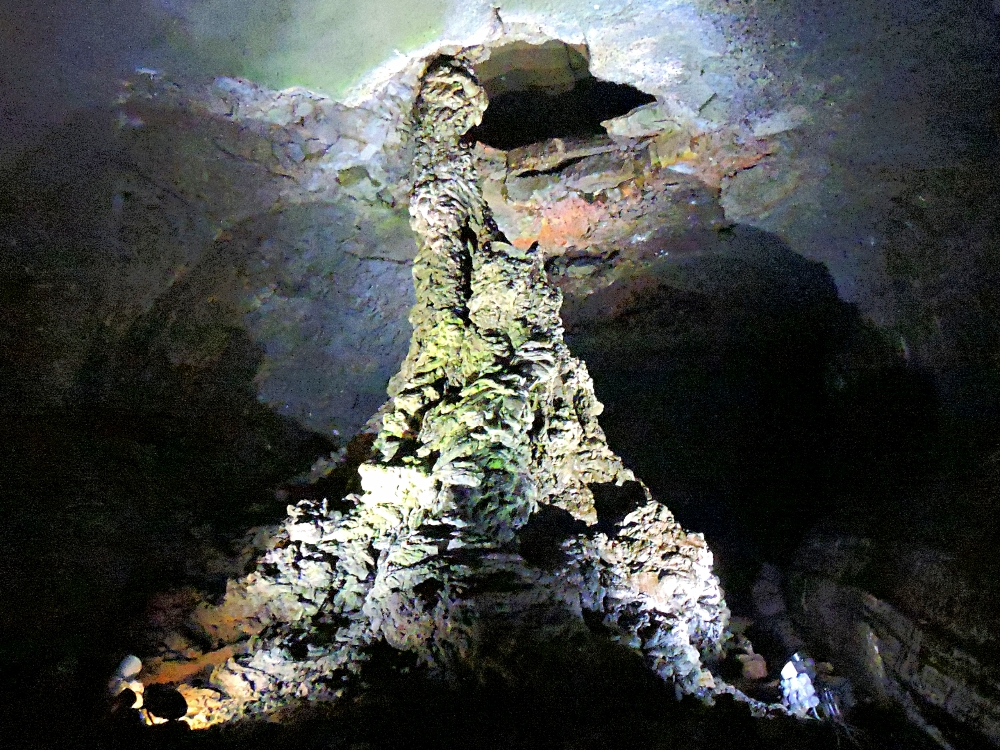
The third part of the Site is the natural area around the central peak, Mount Hallasan. While there are some nice forest walks available in that area, there weren’t any specific volcanic features that would have justified dragging myself several hundred meters up a mountain on a hot day, so I skipped that section. Overall, Jeju was a pleasant enough visit, but I found the island as a whole to be too overdeveloped for my tastes. Considering that I had also experienced shield volcanos before, it may not have been worth the extra effort required to get there. Of course, this would be one of the only natural places that I would get to see on this Tour in Korea, so that was reason enough to visit the island.